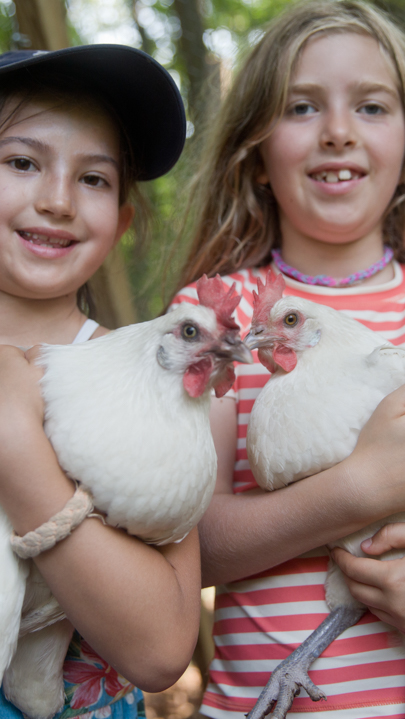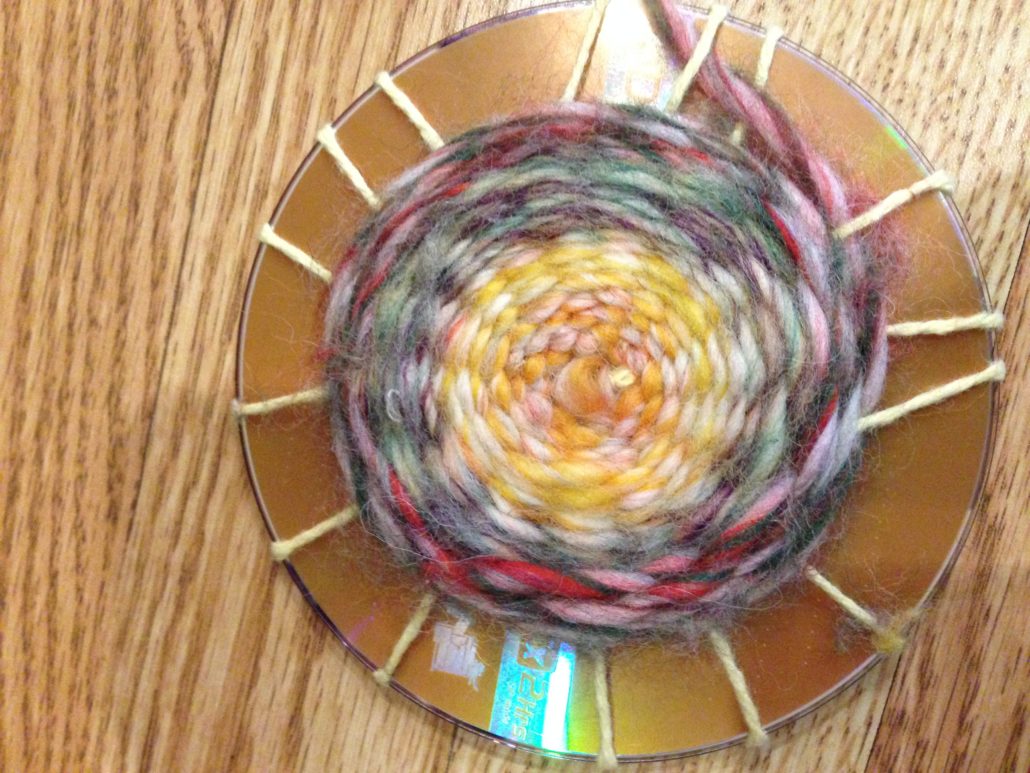The Weaving Room

Eva Szigeti weaves us a story full of memory and beautiful imagery, and shows us how to weave at home, no loom needed!
Although the rhythm of the seasons is imprinted in the rhythm of our of daily lives only marginally, we perceive late fall and winter as a time for introspection, indoor activities and generally a slower pace of life. Even if for most of us, life during this time of year doesn’t actually slow down much, we try to find bits of time for ourselves: we sit down with a thick book, a large mug of hot tea or our knitting needles, to relax. In traditional societies, handwork was one of the main winter activities. With no work outdoors, it was a time to sew, spin, weave or knit; to create pieces of clothing for the family and textiles for the household. For me, to spin some wool into yarn or to knit a hat for my child is not a necessity, but regardless of the outcome of the final product, I find these activities rewarding, going well beyond “hand work”.
Writing about handwork, I can’t help but think of my friend Ruth. Ruth is a hobby weaver. On most days, she spends some time in her small attic room furnished with a weaving loom, small couch and baskets of wool and silk yarns that are impatiently waiting to be chosen for the next project. The weaving loom dominates the space, at least visually. But more than anything the room is filled with sound: the noise of moving water. Ruth’s window is overlooking a narrow inland bay that looks much more like a fast moving river than a branch of the ocean. Through openings between the branches of tall pine trees, the eye can reach the surface of the water.
The power of the tide coming in and going out of the bay moves masses of water. The noise seems almost unbearable at first. It is natural, beautiful, and overwhelming at the same time. Then you get used to it, it becomes one of the dimensions of the space, it defines the place like the trees growing at the water’s edge. It belongs there. Next, you miss it. For a short period of time, right at the midpoint between low tide and high tide, the water changes. It is still. It doesn’t move. Between the river flowing east and the river flowing west, there is suddenly a river that has come to a halt; and you miss the noise.
I often wonder if Ruth would weave very different scarves in another room. Does the pace of her weaving change when the room is overpowered by the sound of the moving water? Does she stop to take a nap on the couch when the water is quiet? Does she reach for strong colors when the noise is overpowering? Are pastels her choice as the sounds leave the room? And her thoughts? Does she move the shuttle up and down with the rhythm of the water or the rhythm of her thoughts? Do they all become one? – The arm of the ocean reaching far inland, bringing the smell and the sounds of the deeper ocean, the purple pattern on the loom, pictures of childhood flashing in Ruth’s mind.
I imagine there is so much more happening in that room than a new scarf being born out of carefully chosen spools of thread. As the freshly woven weft is beaten down and finds its place in the pattern of the newly created fabric, so must the weaver’s mind come to a quiet place, the thoughts and flashing memories finding their places in the narrative of life: spots in the fabric of life.
The shuttle moving up and down, and one more row is added, up and down, and another row is done. Everything is becoming organized, everything starts to make sense, the pattern is emerging, the weaver is finding answers.
Ruth weaves a lot, and although she sometimes sells her scarves at the local farmers’ market, income is not her reason. She likes to weave, of course, she likes to use her hands to create, the beauty being born under her fingers gives her pleasure. Undoubtedly, she must like the unusual charm of her room, the solitude it offers, the time with herself and for herself…
The rhythm of the water, like the spacing of the warp, like her hand pulling the weft through the corridor of warp threads: left to right then right to left, the weft going under and over, under and over the threads of warp. Like the water leaving the narrow confines of the bay at low tide, the thoughts are flowing free, a beautiful unexpected pattern is taking shape on the loom….
I haven’t seen Ruth for a while but I am thinking of her as I fold the blanket she had woven for my then newborn daughter. I hope she found some time today to sit down and weave; to create, to find sense and balance. I hope that the cozy room and her weaving loom took her once again someplace where there is rhythm, order and freedom at the same time: the up and down of the shuttle, the water flowing east then west, the noise and the absence of the noise… I imagine this is the real reason why Ruth weaves.
Because all things in the fabric of life are interwoven…
Project
Weaving with Kids
You don’t have to own a loom to introduce your child to basic weaving techniques.
When weaving, we are creating a fabric by interlacing two different sets of yarn at right angles. The longitudinal threads are called the warp, the lateral ones are called weft. At home, we can create a weaving frame out of natural materials or recycle a CD and use it as a base for our weaving.
You will need:
sticks
yarn
scissors
Those who have access to a backyard, park or woods can create a simple, rustic weaving frame out of collected sticks. You will need four relatively straight sticks of about the same length. Put the sticks on a table forming a rectangle (with the ends crossing). Tie the corners where the sticks cross using yarn or string.
Prepare the warp: take a long piece of yarn and tie it to the left side of the bottom stick of your frame. Bring the warp yarn over the upper part of the frame then down around the back. Pull your warp yarn across the loom again. You are always crossing over the front of the frame and around the back making a figure 8 with your warp thread. Continue until you have warped the frame and then tie off your warp. Your frame is ready for weaving!
Choose a yarn for weft (you can also interlace your warp with plant material, like long stalks of grass or very thin twigs). Starting on the left side, begin interlacing your weft with warp by going under, then over the warp, under and over, under and over until you come to the right side of the frame. In the next row, you will be interlacing the weft with warp starting on the right side of the frame. This time, the weft will go under the warp where it was over the warp in the first row. Continue this process until you fill your frame. In this project, the created fabric is not taken off the frame. The frame becomes part of the final project.
CD Weaving
You will need:
CD
some yarn
scissors
Cut a piece of yarn about six feet long. This will be your warp thread. Tie it to the CD. The knot should be on the ‘wrong’ side of the project. Wrap your yarn around the CD 13 or 15 times (must be an odd number). Make sure the warp is tight. Tie the end of the string. You are ready to start to weave.
Tie the yarn to one of the warp threads close to the middle of the CD. Hide the knot on the ‘wrong’ side. Pull your yarn between the warp threads alternating going above and under the warp. Keep repeating this process. Make sure your yarn is tight. If you would like, you can change colors (there is no need to change colors if you are using a rainbow-colored yarn). When you switch yarns, tie the new color to the old yarn. As you continue weaving, hide the knot under your weaving. When you are finished, tie your weft string to a warp string and hide the end under the weaving.





